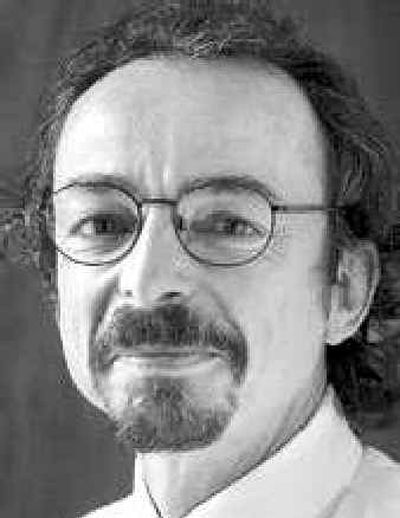Future looks bright for downtown

Daniel Iacofano practices a kind of civic feng shui. But the urban planner from Berkeley, Calif., says many of the assets necessary to create a vibrant downtown were already in place when he first came to Spokane in 1998.
Much of the historic building stock was relatively well-preserved, he notes. The streets were laid out in a neat grid. The Spokane River and Riverfront Park imparted an outdoors feel appropriate for the Northwest. Many resources critical to the economy, like the hospitals and airport, were close by.
“It’s very comfortable,” Iacofano says. “I had a very positive first impression.”
He was scouting Spokane for his firm, Moore Iacofano Goltsman Inc. MIG was pursing — and eventually won — a $250,000 contract to draft a redevelopment plan for the downtown area. One year later, that job was finished, but Iacofano has not been away from Spokane very long since then.
He was hired to reshape the plan for the Davenport Arts District. He drafted a strategic plan for the Downtown Business Partnership. Now, he’s working with the group planning a Great Gorge Park for the river downstream from the Monroe Street Bridge, and another shaping the University District upstream of the Division Street Bridge.
The downtown plan, and the $1.5 billion invested since its completion, was the first step.
“The downtown sets an image. It sets an identity for the region as a whole,” Iacofano says.
With each initiative, Iacofano says he tries to find out what vision the community has for the area, what key projects will go furthest towards realizing that vision, and what can wait — or be discarded — because the market will not support it.
“Planners like to think they control things,” he says. “But the public sets the rules of the game.”
Developers do the real work, Iacofano says, but allowing growth without a plan is like driving with your hands off the steering wheel. And when a community buys into a plan, it creates a sense of security that takes some of the risk out of developing a new project.
For example, in the Davenport District — the “arts” was dropped — the version adopted a decade ago was expanded to include performing arts venues and design-related goods and services.
“Sure enough, a lot of those things happened,” Iacofano says, with the opening of the Big Easy and the Spokane Symphony’s purchase of the Fox Theater. “As a planner, that’s what you’d like to see.”
The expanded Convention Center will also generate more development, he predicts.
Iacofano is particularly impressed with the enthusiasm over the University District that could evolve around the Riverpoint Campus on East Trent. At the most recent community meeting on the project, he bounced among the four groups examining each quadrant of the project. A final version of the plan is due in about a month.
“The future economy in the United States will be based on intellectual capital,” he says. The district will put Spokane on the map for those looking for highly educated workers.
Iacofano says he wants the recommendations for the district to be visionary, but realistic, a goal within reach if the area can draw on the resources of the nearby medical facilities.
If the potential is there, MIG will find it, says Mike Edwards, president of the Downtown Spokane Partnership. A former planner himself, Edwards says Iacofano distills community vision down to the relevant, workable essentials better than anyone he has ever seen.
“If you don’t do that, you’ve got a plan that’s going nowhere,” Edwards says.
MIG has worked on projects from Florida to Wisconsin to California. Cities, Iacofano says, are back. Vancouver, British Columbia, combines retail, housing and amenities in a blend that exemplifies the best kind of urban environment, he adds.
“Spokane is sitting on the verge of that,” he says, although more housing would strengthen the mix.
“People like their city,” Iacofano says. “They see the good.”